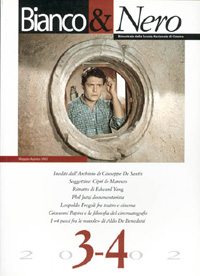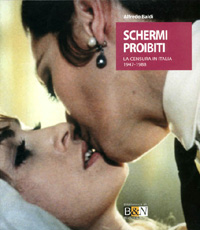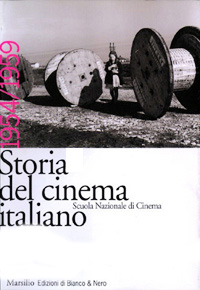Our History
Since 1937 the Centro Sperimentale di Cinematografia has been publishing editions of cinematographic topic.
The first publishing activities date back to 1937, the year of foundation of the prestigious magazine of cinematographic studies “Bianco e Nero“, created with the aim of developing a critical and theoretical discourse on cinema. From January 31, 1937 (date of the first issue), until today, the magazine has been edited almost continuously, keeping its historiographic line intact in almost seventy years of life, despite having experienced many changes at the decision summit and inevitable discontinuities in the cultural approach. Official organ of the Centro Sperimentale di Cinematografia, “Bianco e Nero” has had different periodicity and remains the oldest among European periodicals pubblications.
The magazine has been supported from the beginning by many other editorial projects. Hundreds of volumes on cinema have been published since 1937, divided into book series or printed for exhibitions, restorations, retrospectives and special events. A very rich collection of studies, essays, anthologies, manuals, stories, repertoires, treatises, which is divided between the territories of criticism, aesthetics and theory, and the more specific side of the film industry. Already in the mid-1940s the collection of publishing activities, which ideally constitutes a “Bianco e Nero Library“, boasts the contributions of well-known Italian and foreign intellectuals, historians and critics, from Luigi Chiarini to Umberto Barbaro, from Francesco Pasinetti to Mario Verdone, from Vsevolod I. Pudovkin to Raymond J. Spottiswoode. Many of these texts, awarded by the public and critics, have known international resonance and are still essential tools for all scholars.
Among all the cultural initiatives of the Editorial Activities, the Filmlexicon,with their authors and plays, is the one that remains very famous. Consisting of a monumental international biofilmographic dictionary, it’s the first in the history of Italian film publishing to have attempted a philological arrangement of the vast and fragmentary sources of world cinema, elaborating large biographical cards with a historical-critical approach. The work, started under the guidance of Fernaldo Di Giammatteo during the fifties, thanks to a dense network of authoritative collaborations, especially Italian, but also foreign, composed of 10 volumes (the last 3 consisting of updates and integrations)
A Storia del cinema italiano, is an undertaking of great editorial, cultural and scientific commitment, created in collaboration with Marsilio Editori. The work, divided into 15 volumes (14 of texts and 1 of indexes) starts from the pre-cinema and traces the twentieth century up to the present day, studying from different points of view more than one hundred years of Italian cinema: the poetics and aesthetics; the authorial lines and practices of genre cinema; the ways of production and the ways of representation; forms of consumption and the relations with the media; public and private institutions in cinema. The work includes 9000 pages of historiographical texts, documents and filmographies, accompanied by thousands of illustrations, mostly frames taken from the films.

 Login
Login Chart
Chart











